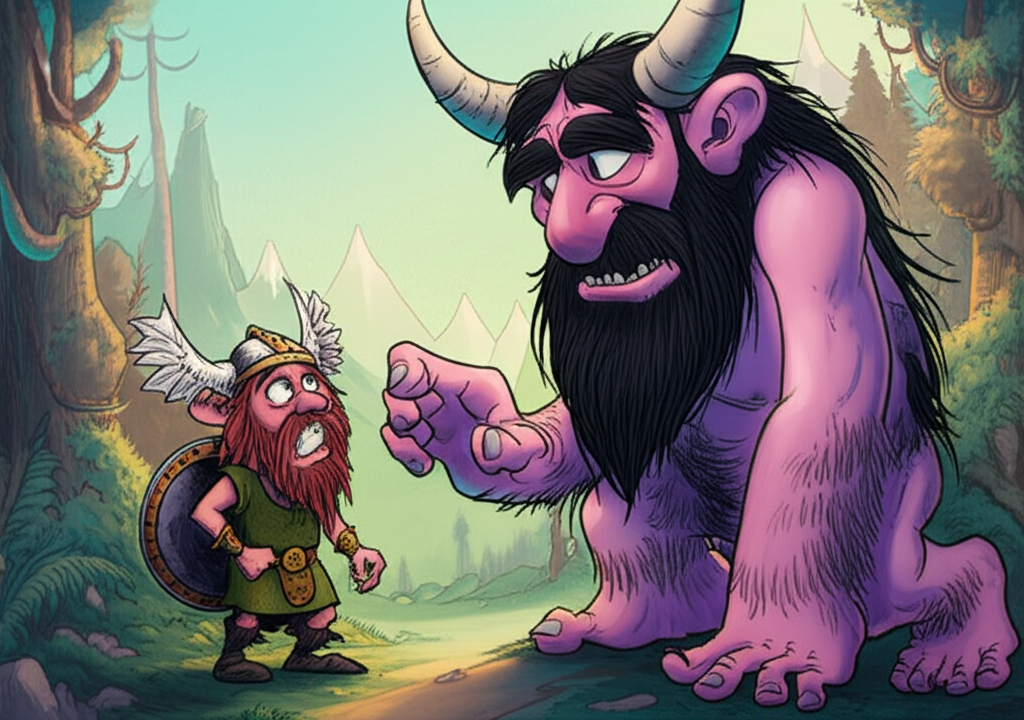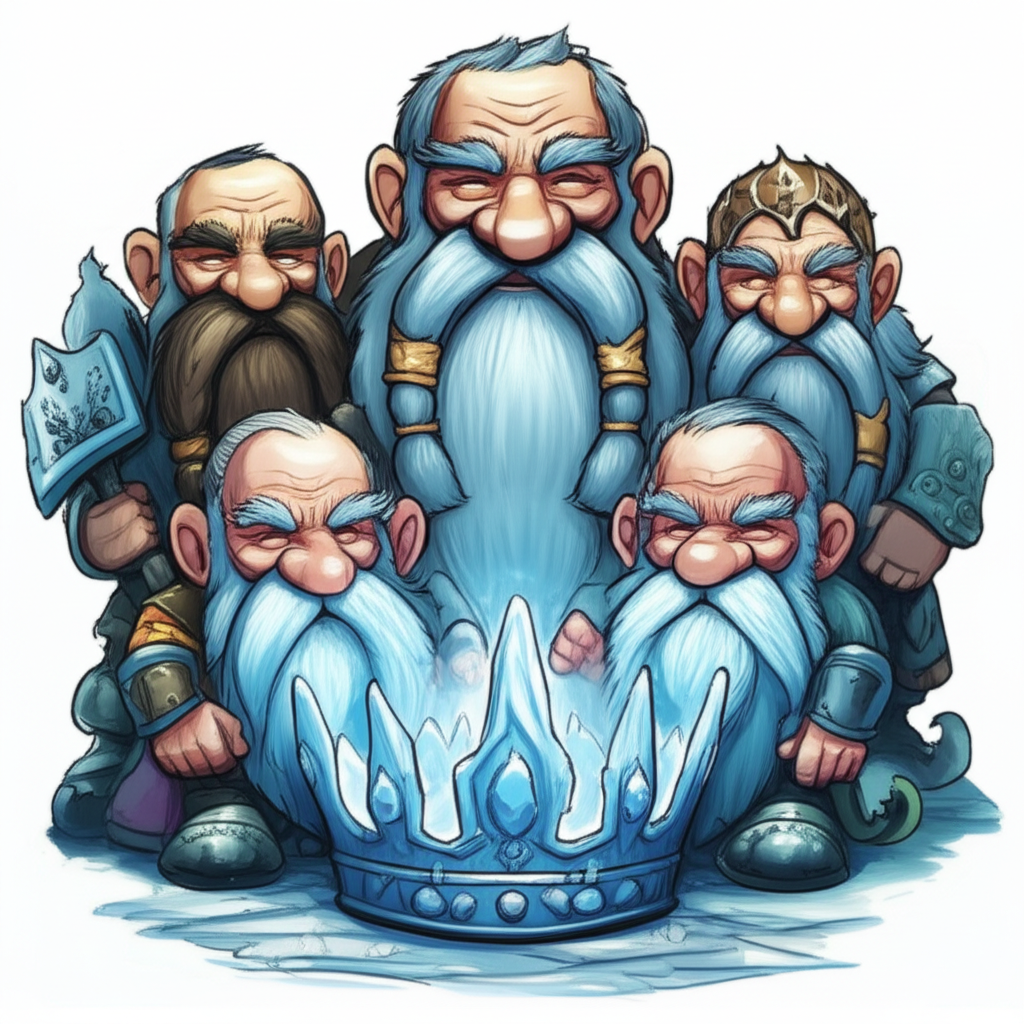The biting winds sweeping across the fjords and through the ancient forests of Scandinavia carried with them tales of gods and giants, of a world forged in ice and fire, and of a cosmic tree, Yggdrasil, that held the nine realms in its embrace. These were not pronouncements of divine decree, but the rich tapestry of folklore woven by the Norse people, a vibrant narrative tradition that sought to explain the inexplicable, to find order in chaos, and to explore the very essence of existence. Among these enduring sagas, the story of Baldr’s death stands as a particularly poignant and complex thread, a narrative of innocence betrayed and the ensuing tremors that rippled through their imagined cosmos.
The cultural landscape from which this myth emerged was one shaped by the harsh realities of the North. For the Norsemen, life was a constant negotiation with nature’s formidable power. Survival demanded resilience, a deep understanding of the seasons, and a respect for the forces that governed their world. Their cosmology reflected this: a universe populated by powerful, often capricious deities, formidable giants embodying the untamed aspects of nature, and the ever-present threat of Ragnarök, the twilight of the gods. They viewed the world not as a benevolent creation, but as a dynamic, often perilous arena where strength, cunning, and a certain fatalism were essential virtues. Within this framework, stories served as a vital tool, offering explanations for natural phenomena, moral guidance, and a shared identity that bound communities together. The myths were not rigid dogma but living narratives, constantly retold and reinterpreted, reflecting the anxieties and aspirations of their time.
At the heart of this particular saga lies Baldr, a figure depicted as the embodiment of light, purity, and goodness. He was the son of Odin, the Allfather, and Frigg, the queen of the gods, and his very presence was said to bring joy and beauty. Baldr was characterized by his fairness, his kindness, and his radiant aura. He was the god of summer, of peace, and of all that was noble and beloved. His symbolic attributes were those of the sun, of life’s vernal renewal, and the gentle warmth that banishes the winter’s chill. His beauty was not merely physical; it was a reflection of an inner perfection, a beacon of hope in a world often overshadowed by darkness and strife.
The narrative of Baldr’s demise is a somber epic, a testament to the insidious nature of envy and deceit. It is said that Baldr began to have dreams, premonitions of his own impending doom. These dreams troubled him, and his mother, Frigg, fearing for her beloved son, set out to secure his safety. She traversed all the realms, extracting oaths from every living thing – from the mighty oak to the smallest blade of grass, from the roaring beasts to the silent stones – that they would do Baldr no harm. All swore their allegiance, except for the humble mistletoe, deemed too insignificant to pose a threat.
This seemingly minor oversight became the fulcrum upon which fate turned. Loki, the cunning and mischievous god, a master of deception and an agent of chaos, learned of this loophole. His heart, consumed by an unquenchable envy for Baldr’s perfection and the adoration he commanded, plotted his wicked design. He approached Baldr, who, confident in his invulnerability, was playing a game with the other gods. The gods, all of them, hurled weapons at Baldr, confident that nothing could harm him. Loki, however, presented Baldr’s blind brother, Hodr, with a dart fashioned from the mistletoe. Unsuspecting and manipulated, Hodr cast the dart, and it struck Baldr, piercing him through and bringing him down in a deathly stillness.
The aftermath of Baldr’s death plunged Asgard, the realm of the gods, into a profound and all-encompassing grief. The radiant light that Baldr represented was extinguished, leaving a palpable darkness in its wake. The joy that once permeated the halls of the gods was replaced by an unbearable sorrow. Odin, the wise but now heartbroken father, was consumed by despair. Frigg, the once-powerful queen, wept tears of inconsolable anguish. The very fabric of their divine community seemed to fray.
A desperate attempt was made to retrieve Baldr from the underworld, presided over by the somber goddess Hel. Odin sent his son, Hermod, on a perilous journey to plead for Baldr’s release. Hermod rode Sleipnir, Odin’s eight-legged steed, through the dark and desolate lands, eventually reaching Hel’s grim hall. Hel, however, agreed to release Baldr only if all living things in the nine realms wept for him. All wept, a torrent of sorrow that demonstrated the widespread love for Baldr. Yet, in a dark cavern, a giantess (often identified as Loki in disguise) refused to weep, her heart unmoved, thus sealing Baldr’s fate in the realm of the dead.
The story of Baldr’s death and its aftermath may have represented several profound concepts to the ancient Norse. It spoke to the inherent fragility of goodness and beauty in a world often dominated by darkness and malice. The betrayal by Loki, a being who embodied cunning and disruption, highlighted the ever-present threat of malevolence, even within the seemingly ordered divine realm. The pervasive grief underscored the value of innocence and the deep impact of loss, a universal human experience that resonated even in their mythical narratives. Furthermore, the story could be interpreted as a commentary on the limitations of divine power, demonstrating that even the gods could not always defy the forces of fate or the consequences of their own actions and oversights. The mistletoe, a plant that thrives in the shadows and grows parasitically, could symbolize the insidious nature of evil, finding its opportune moment to strike when vulnerability is present.
In modern interpretations, the myth of Baldr’s death continues to captivate. It has been reimagined in literature, from epic poems to fantasy novels, often serving as a catalyst for grand quests or explorations of moral complexity. In popular culture, particularly in video games and films, Baldr’s story and the figures involved are frequently adapted, lending themselves to dramatic narratives of betrayal, loss, and the struggle against overwhelming odds. Academically, the myth is studied for its insights into Norse societal values, their views on death and the afterlife, and the evolution of their storytelling traditions. The symbolic resonance of light versus darkness, innocence versus corruption, and the enduring power of grief continues to make it a compelling subject for analysis and artistic expression.
In understanding this ancient narrative, it is crucial to reiterate that the story of Baldr’s death is a traditional tale, a product of the imagination and cultural context of the Norse people. It is a fascinating glimpse into their worldview, their anxieties, and their enduring questions about life, death, and the forces that shape existence. As Muslims, we recognize that the true Creator and Sustainer of all that exists is Allah (God), and that all power and authority reside with Him alone. These ancient stories, while culturally significant, do not alter this fundamental truth.
Yet, the enduring power of such myths lies not in their literal truth, but in their capacity to reflect the human condition, to explore the complexities of morality, and to preserve a rich cultural heritage. The tale of Baldr’s passing, with its echoes of sorrow and the profound impact of loss, serves as a reminder of the universal human experiences that transcend time and culture, a testament to the enduring power of storytelling to connect us to the past and to illuminate the depths of our shared human imagination.





